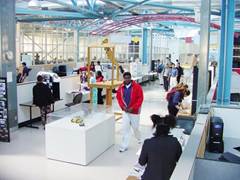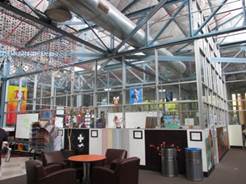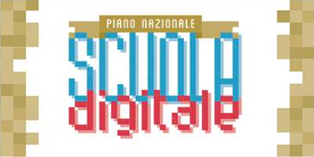ABSTRACTS 2nd SESSION


Nowadays Big Data represents a fundamental shift in any decision-making process, including the field of education.
Data can help us understand how to make a better and more effective use of resources in learning and teaching.
Having access to more and better data can help us take more intelligent and informed decisions , provided they satisfy certain conditions.
Data have a limited value in themselves. They become useful and relevant when analyzed accurately, giving evidence which show how to create a more effective and equitable system of education

The challenge is to compose information which become intelligible evidence for teachers, students, parents, institutions and the community. And also to help teachers integrate the use of data in their practice.
This presentation will show how some schools are using big (and small) data, and it will examine advantages, risks and future trends

 Throw out the textbooks! This is the 21st century.
Throw out the textbooks! This is the 21st century.
Information is everywhere and accessible to anyone with a cell phone and a wifi connection.
American educator and philosopher John Dewey once said, “If we teach today’s students as we taught yesterday’s, we rob them of tomorrow.” How, then, do schools respond to this paradigm shift- where teachers are now guides, instead of gatekeepers, to information never before accessible?

High Tech High is a network of eleven schools in San Diego County, California, spanning grades K-12 (ages 6-18 years old).
We support team teaching and the careful design of projects that integrate academic skills with real-world application. Throughout our school system, we use Project-Based Learning to prepare students of the 21st century skills needed in the 21st century. Our students work in groups and create technology-enabled projects that speak to a specific set of urgent social, academic, and political questions.

Our teachers are the designers of this curriculum/ curricula that emphasize innovative thinking, collaborative teams, critical thinking, persistence, and problem solving. Teachers design and create collaborative projects that make learning authentic, meaningful, and transformational.
Our pedagogical design principles are built on personalization (work that matters to students and to their communities), equity (all students create work), authentic work (students are intimately involved in design and execution of projects), and collaborative design (students most often work in groups).
Our students learn through doing meaningful community internships, culminating exhibitions of their work, and public presentations of their own learning.
Fondamentale all’apprendimento sono i tirocini significativi svolti entro il territorio e la comunità sociale. I tirocini culminano con l’esibizione del lavoro svolto, e la presentazione pubblica del proprio apprendimento .
.
Key elements of our original pedagogical philosophy are: an emphasis on collaborative work, a strong focus on student-centered curriculum, multiple structured opportunities for students to work on internships, weekly professional development for educators, team teaching and team design of student project curricula

 Launched on October 2015 by the Ministry of Education, University and Research, the National Plan for Digital Education is Italy’s policy for innovating its schools and bringing its educational system in the digital age.
Launched on October 2015 by the Ministry of Education, University and Research, the National Plan for Digital Education is Italy’s policy for innovating its schools and bringing its educational system in the digital age.
Funded by 1.2 billion Euros, using different funding sources of the Ministry of Education, it contains 35 actions, organized into 9 areas: Access; Learning Environments; Digital Identity and Administration; Digital Literacy; Entrepreneurship and Digital Careers: Digital Contents and OER: Training; Sustaining and Monitoring Innovation.
The Plan pushes a systemic vision, which aims to address education in the digital age not as a mere unfolding of technology, but through the challenge of learning and organizational innovation.
It delivers, on one hand, universal investments towards all 8.400 Italian schools on key areas such as Internet access, learning environments or teacher training, and aims, on the other, to spur innovation by funding innovative partnerships thus able to stimulate the whole education system.
 After the first year of implementation, 70% of its actions have been put in place, for a total investment of over 500 million Euros.
After the first year of implementation, 70% of its actions have been put in place, for a total investment of over 500 million Euros.
Time to reflect on the policy, the validity of his approach and the impact of its actions, and to highlight the prospects for the Plan’s second year.
Starting from its strengths: among them, the care of the investments in learning environments, to be understood not only as enablers of good teaching, but as key elements of a more “cosy” and accessibile idea of innovation; its attention to the relationship between innovation and organization, especially through the newly-created role of digital ambassadors and innovation teams in every schools; third, the ability to balance investments in universality and innovation, especially through innovative “content” partnerships.
Finally, through a central awareness. The Plan is a living policy, as it feeds from the same movement that is helping to create.


In my presentation I will give a brief introduction to the pedagocal ideas of Oerestad Gymnasium, why we use open learning spaces in combination with more traditional learning spaces, and why the use of digital technology is so important for us. I will show how our digital world is organised and how it is used in teaching.
The professional learning community of the teachers is crucial in order to  create a student centered school that has set the goal to develop 21st century skills. I will describe how the teachers are organised to support the learning of the students and how the management team is organised in order to support the teachers.
create a student centered school that has set the goal to develop 21st century skills. I will describe how the teachers are organised to support the learning of the students and how the management team is organised in order to support the teachers.
We say that we want to develop changemakers, so finally I will talk about our changemaker+ program – a program to develop the students’ leadership skills.
<Back to 1st session abstracts



